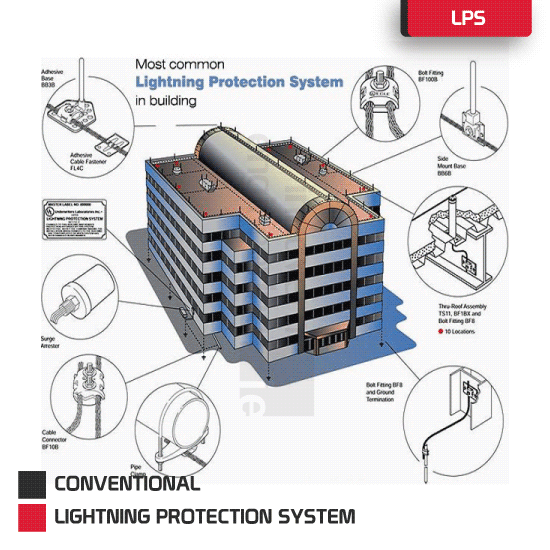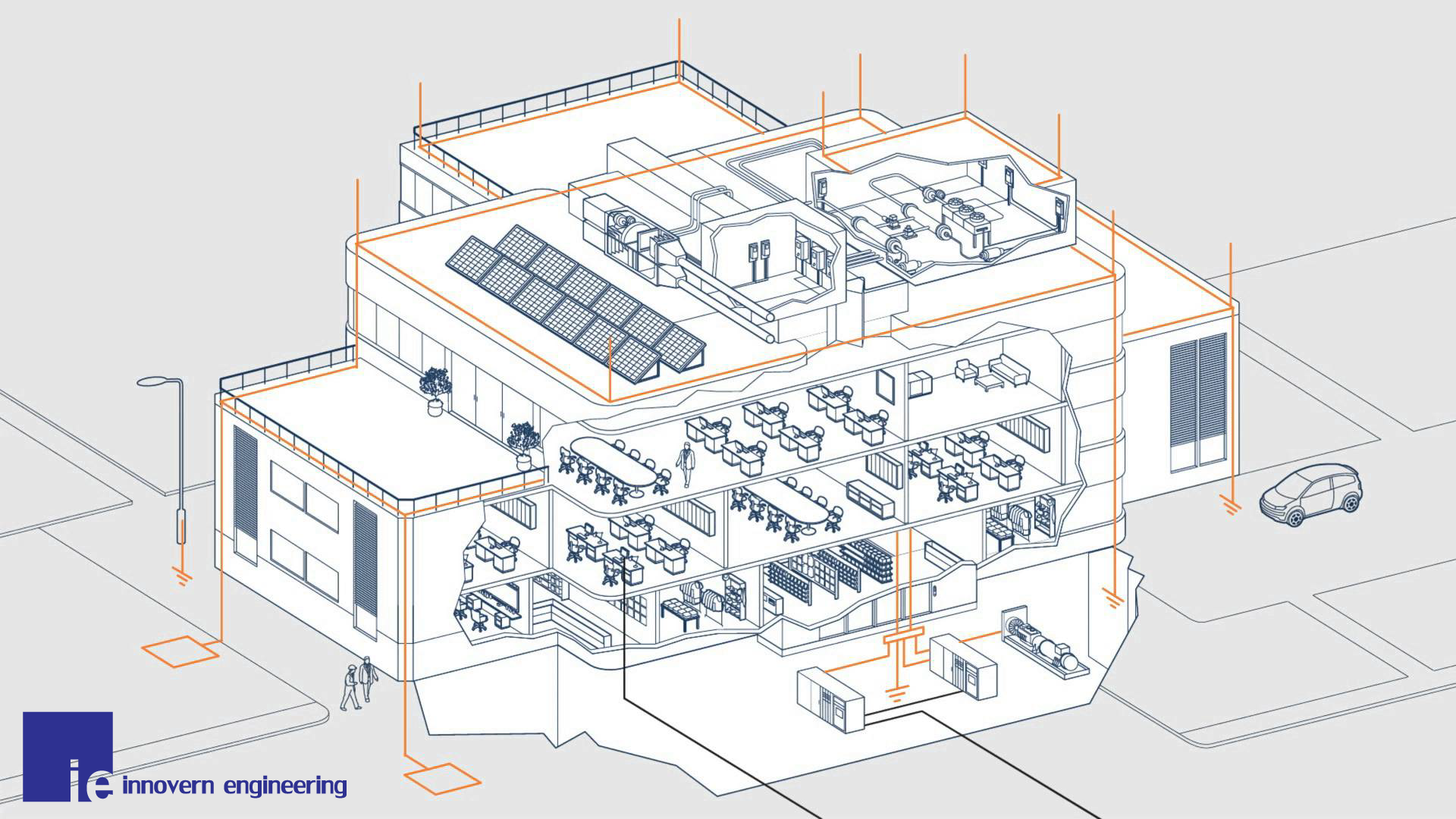Various Protection Method
There are various types of protection method for lightning protection systems. The types are differentiate based on design, installation and protection method. Each designed to provide effective protection against lightning strikes by intercepting, conducting, and safely dissipating the electrical discharge. The primary types include:
1. Conventional Lightning Protection System (Franklin Rod System)
- Components: Consists of air terminals (lightning rods), down-conductors, and grounding electrodes.
- Function: Air terminals intercept lightning strikes, and down-conductors carry the current to the grounding system, which disperses the energy into the earth.
- Usage: Widely used for buildings, towers, and other structures.
2. Early Streamer Emission (ESE) Lightning Protection System
- Components: ESE air terminals, down-conductors, and grounding system.
- Function: ESE terminals generate an upward streamer earlier than conventional rods, increasing the protective area.
- Usage: Used in various structures where larger areas need protection.
3. Dissipation Array System (DAS)
- Components: A network of ionizing points (dissipation arrays) and grounding system.
- Function: DAS reduces the likelihood of lightning strikes by dissipating static charges into the atmosphere.
- Usage: Ideal for large and complex structures, such as industrial plants and military installations.
4. Faraday Cage (Mesh or Grid System)
- Components: A conductive mesh or grid that surrounds the structure, connected to the ground.
- Function: The mesh intercepts lightning strikes and safely conducts the current to the ground.
- Usage: Commonly used for protecting sensitive equipment, like in telecommunications and data centers.
5. Grounding and Bonding Systems
- Components: Grounding electrodes, conductive cables, and bonding conductors.
- Function: These systems ensure that all parts of a structure are at the same electrical potential, reducing the risk of side flashes and ensuring the safe dissipation of lightning energy.
- Usage: Essential in conjunction with other lightning protection systems to enhance safety.
6. Surge Protection Devices (SPDs)
- Components: Various types of SPDs, such as Type 1, Type 2, and Type 3, designed to protect electrical and electronic systems.
- Function: SPDs limit voltage surges caused by lightning strikes, protecting sensitive equipment from damage.
- Usage: Used in residential, commercial, and industrial buildings to safeguard electrical infrastructure.
7. Integrated Lightning Protection System
- Components: A combination of conventional or ESE systems with grounding, bonding, and surge protection.
- Function: Provides comprehensive protection by integrating multiple components to cover various aspects of lightning risk.
- Usage: Suitable for complex structures requiring a holistic approach to lightning protection.
Each type of lightning protection system has its advantages and is selected based on the specific requirements of the structure, the level of risk, and regulatory standards. Combining different systems often provides the most effective protection.






Leave a Reply